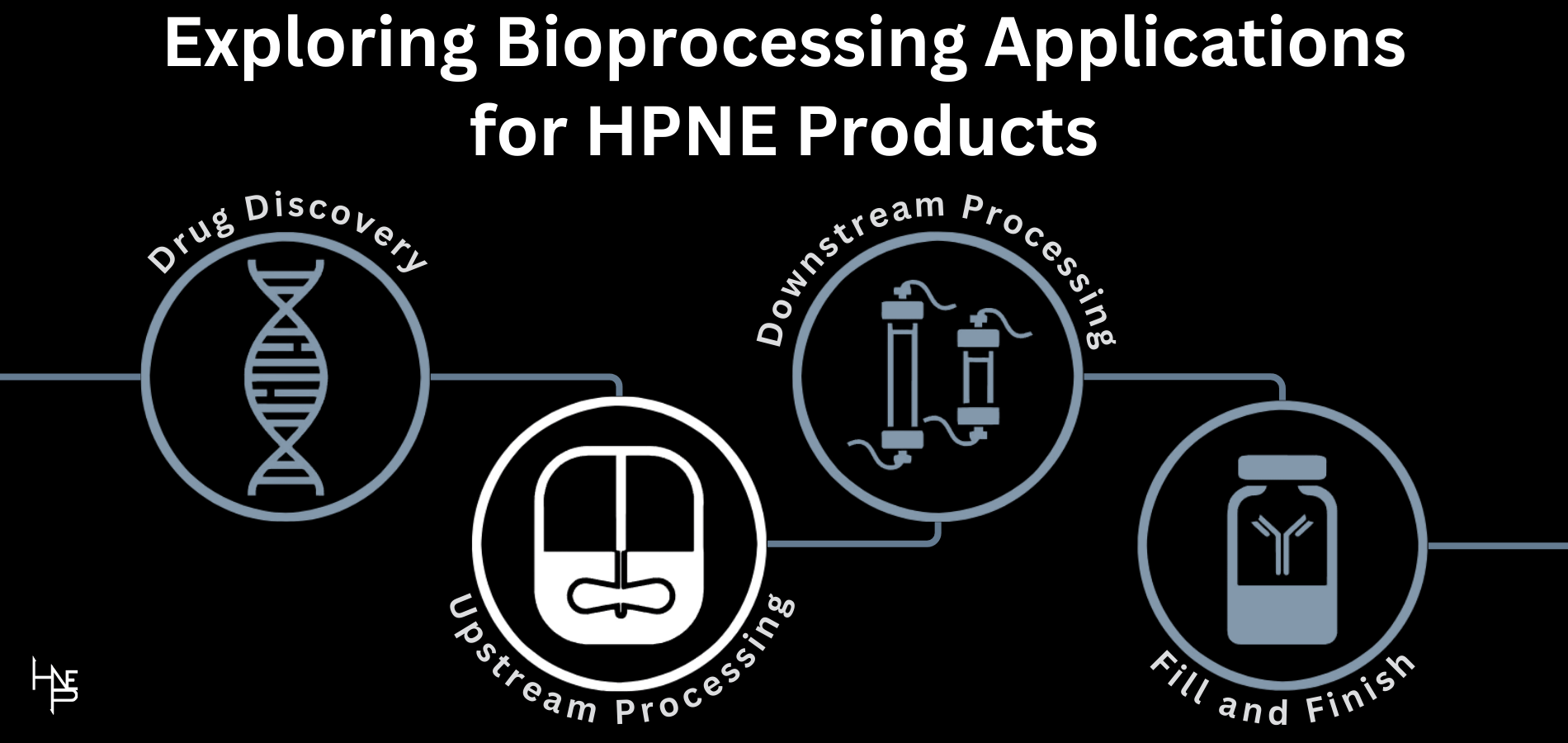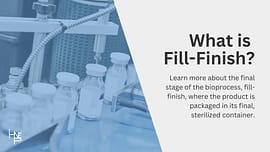What is Upstream Bioprocessing?
Learn more about Upstream Bioprocessing, the initial stage where cells are grown in a bioreactor, which involves all the steps related with development including media prep, cell culture, and cell separation.

When discussing the bioprocess, you may have heard the terms “upstream processing” and “downstream processing”. In this article, we will be defining upstream bioprocessing, how it fits into the bioprocess, and what equipment you can utilize for a more efficient process.
What is Upstream Bioprocessing?
Upstream bioprocessing typically refers to the initial stage in the bioprocess when you are utilizing bioreactors to grow cells, and can include all steps that are relevant to cell culture, cell separation, and media prep. In the biopharma industry, upstream bioprocessing is one of the early stages in producing a variety of solutions like vaccines, antibodies, proteins, and more.
Ultimately, in this stage of the bioprocess, you are typically trying to increase a small volume of cells to a much higher volume. The type of cell you are trying to achieve cell-growth with will depend on the main goal of your overall process, as upstream processing can be completed with a variety of cell types.
Stages of Upstream Bioprocessing
Stages throughout upstream bioprocessing may change based on your desired goal or end result for your sample, but a few common steps in upstream bioprocessing include media preparation, cell or microbial culture, cell separation, and harvesting.
Media Preparation
Often the first step in an upstream bioprocess, media preparation involves determining the best media composition to accurately ensure the growth and propagation of your desired microorganisms or cells. At this step, you must be careful when measuring the ingredients of your culture media to ensure that each is aligned with the culture media formulation recipe. In some cases, an analytical balance may be used during this step.
Cell or Microbial Culture
During this step, you will utilize your prepared media in the previous step in order to begin multiplying and growing your cells. To ensure proper growth, you want to make sure growth conditions are carefully monitored throughout the process. With optimal conditions, your cells or microorganisms should utilize their nutrient dense media in order to multiply to your desired volume.
Fed Batch vs. Perfusion Bioreactor Culture Methods
When it comes to culture methods utilizing a bioreactor, two options are fed-batch and perfusion. Perfusion can also be called continuous processing, and occurs when medium is circulated through a growing culture, which allows for the simultaneous supply of nutrients, waste removal, and harvesting of the product. In contrast, fed-batch methods involve replenishing nutrients by feeding them to the bioreactor once initial nutrients are depleted.
Cell Separation
Once cells have been grown to the desired volume during the cell culture process, cells must then be separated so that specific cell populations can be isolated from a mixture of cells. Cell separation is often crucial to effective biomedical research and clinical therapy discovery. There are a variety of methods that can be used for cell separation - ultimately you want to find the method that will produce the least cell contamination during the isolation process.
Harvest
After your cells have been properly separated, the final step of upstream bioprocessing is harvesting your cells from the culture medium. For optimal harvesting, you want to ensure that you can minimize the loss of product while obtaining the maximum amount of protein or biomass. As the harvested product will be used in future steps in the bioprocess, it is crucial that the quality of product harvested at this step is the highest possible.
Biosolutions for Upstream Bioprocessing
At High Purity New England (HPNE), they have a variety of solutions available for a range of process applications, including upstream bioprocessing. Most applicable is their range of bioprocessing solutions, including the Appliflex ST Single-Use Bioreactor, SUPR bioReactor, and the Livit Flex Bioprocess Controller.
During the bioprocess, organizations can choose to implement single-use or multi-use equipment at each step. Each type of equipment has pros and cons — for more details, visit our previous articles “What is a Single-Use Assembly?” and “What is Single-Use Manufacturing?”. Detailed below is specific single-use and multi-use equipment that can be instrumental in your upstream bioprocessing.
Single-Use Solutions
A common single-use solution that is important throughout the bioprocess is single-use assemblies. At HPNE, their HPConnexx™ Single-Use Assemblies can be easily integrated into your upstream bioprocessing, featuring applications with bioreactors, buffer & media prep, and more. Each assembly is made in their state-of-the-art ISO Class 7 Cleanrooms, with reduced lead times, no minimum order quantities, and brand agnostic designs.
For adherent cell expansion, try HPNE’s sustainable CellScrew® from Green Elephant Biotech, manufactured with plant-based PLA bioplastics, reducing plastic waste by 90%. Its design is compact without sacrificing cell-culture area, and incorporates an Archimedean Screw, concentric cylinders, and a central tube.
Additionally, High Purity New England carries a range of single-use pumps that can aid with upstream bioprocessing, including their FlowMaxx Pro and Quattroflow Quaternary Diaphragm Pumps. To explore all of the single-use solutions available from HPNE, visit their upstream bioprocessing product catalog.
Multi-Use Solutions
When transporting large volumes of media & buffer during upstream processing, it can be helpful to implement a solution that makes transportation and storage efficient. High Purity New England offers a Stainless Steel Harvest Cart with unique features to improve bag drainage and handling. Each Harvest Cart has sloped shelves angled at 5 degrees and notched outlet spaces to promote smooth fluid drainage. The welded frame of the Harvest Cart is sturdy but compact, taking up minimal floor space in your facility.
Their FlowMaxx Pro Quaternary Diaphragm Pumps can be finished in a multi-use configuration with a stainless steel pump head. Scalable across a range of six sizes, FlowMaxx Pro provides real-time insights into both flow rates and pressure, while providing low cell damage.
For cell disruption, High Purity New England carries a range of Cell Disruptors from Constant Systems including the One Shot (OS), Multi Cycle (MC), and Continuous Flow (CF). This range is ideal for processing your entire sample in a single pass.
Other Applications During the Bioprocess
In addition to upstream bioprocessing, there are a variety of other process applications. High Purity New England has you covered with solutions for every step of your process from drug discovery to fill-finish. Talk to an expert on their team to learn more at info@hp-ne.com.
Share article
About HPNE
As the industry needs grow, High Purity New England, Inc. continues to supply the biopharmaceutical industry with a range of innovative products, from drug discovery and development to fill-finish, including their flagship product, custom single-use assemblies, as well as pumps, sensors, bioreactor systems, storage and handling solutions and other single-use solutions. Along with their own manufactured products for the global market, they are also a distributor for more than 18 brands in North America.




